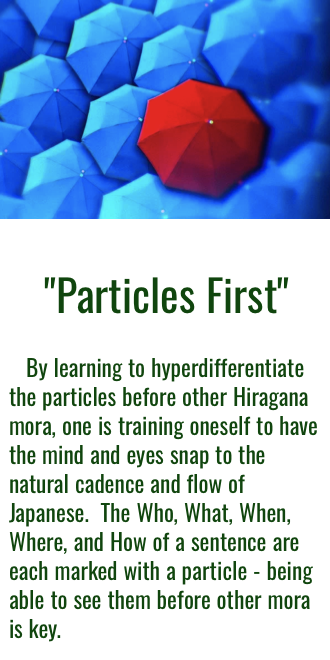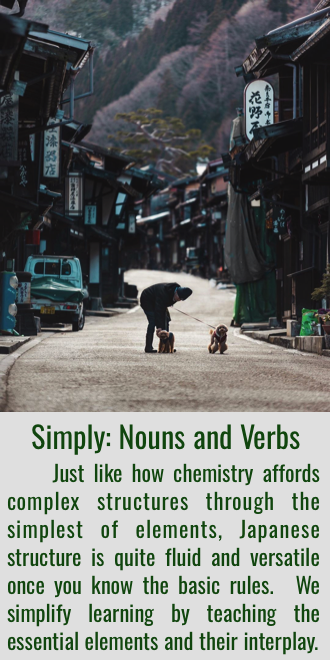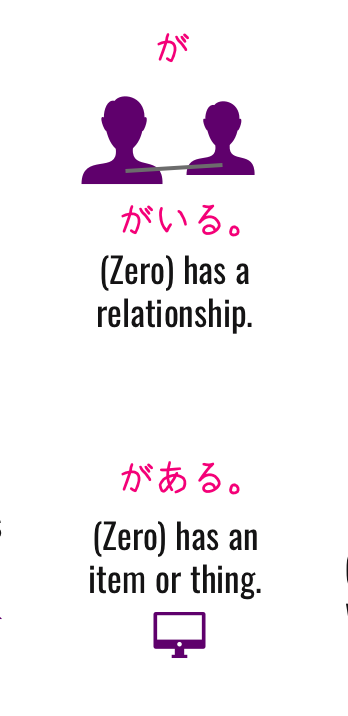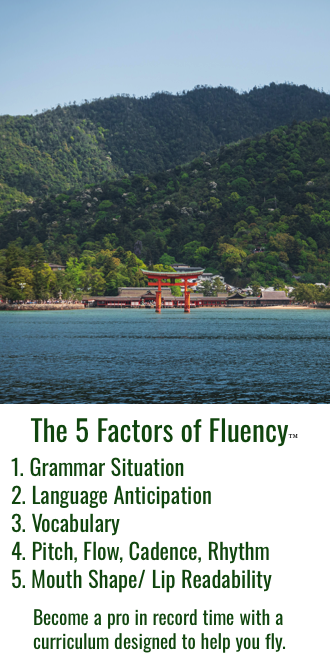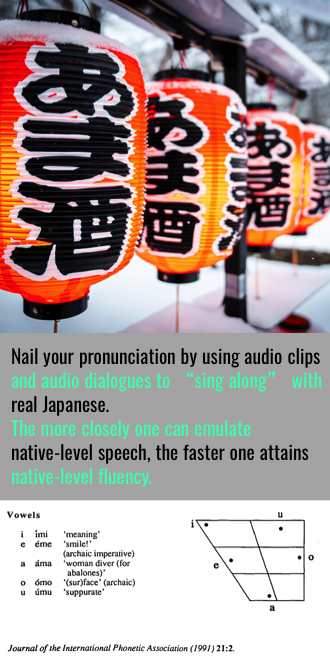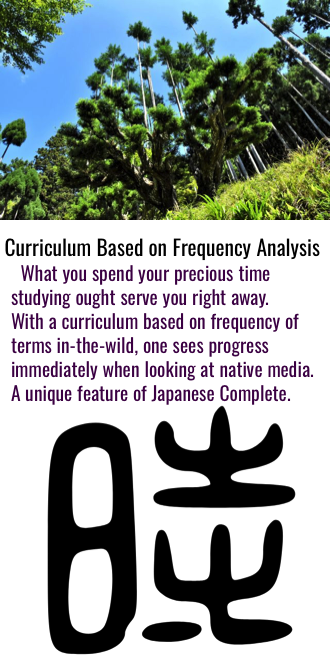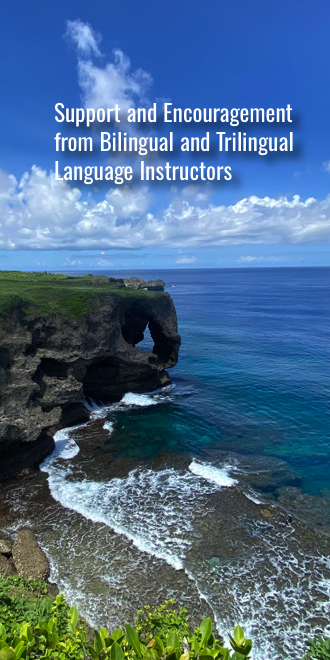
The Syllabaries
The Japanese language, called 日本語(にほんご)[knee-hohn-go] is composed of 2 major syllabaries, Hiragana and Katakana. Made up of Consonant-Vowel pairs [ka, ga, ta, su, mu] as opposed to single letters that can be combined in variety, Hiragana and Katakana are two versions of the same collection, Katakana being used for foreign loan words since the reorganization of public education in 1962.
In addition to Hiragana (the native script) and Katakana (reserved for foreign loan-words post-62), Japan imported symbolic glyphs from mainland Asia and they are referred to as 漢字(かんじ) kanji — letters of the Han Dynasty.
You can learn the Hiragana in the inside front cover of our guide that contains information on essential grammar, sentence structure, sound-effect language, and covers some of the more nuanced aspects of the language in plain English.
Hiragana ひらがな
Warm and curvy, the ひらがな [hiragana] are used for native Japanese words and are the primary phonetic syllabary of Japanese.
あ い う え お
か き く け こ
さ し す せ そ
た ち つ て と
ま み む め も
Katakana カタカナ
The カタカナ [katakana] are sharp and angular, and while letters to friends have been written entirely in Katakana (and Kanji), such as this beautiful letter recovered from the Titanic, since 1962 the カタカナ [katakana] have been reserved for foreign loan-words such as "computer" コンピュータ [konpyuuta] and "glass" ガラス [garasu].
カタカナ [katakana] have a one-to-one correlation with the ひらがな [hiragana] similar to how English has print and cursive.
Kanji 漢字(かんじ)
The 漢字(かんじ) [kanji] were imported lock, stock, and barrel from mainland Asia starting in the 5th century. Fewer than 4% of them are pictographs, and over 90% of the kanji are "meaning and sound borrowers." You can read more about the four types of kanji here.
Practice Listening + Identifying
「聞き取れない」(ききとれない)[kiki-torenai] is the Japanese expression for "unable to get a clear ear grab" of a sound or a term when listening. The audible morphemes of Japanese require plenty of exposure to be able to distinguish them easily, due in part to the clunkiness of the syllabaries, the ひらがな Hiragana and カタカナ Katakana.
Japanese Complete provides a ひらがな Hiragana listening challenge for free to all; our カタカナ Katakana listening challenge is available to premium subscribers
The site SuperNative.tv has an incredible cornucopia of film and television show clips that one can watch on replay with subtitles and fill-in-the-blank exercises to practice the ability to "ear catch" or "ear grab" the audible morphemes of Japanese. We highly recommend this resource for new learners to get an "ear grip" of the common Japanese sounds and how they are actually pronounced. Naturally, real-life speech and the way it is written down may not appear to match up perfectly until one has plenty of exposure.
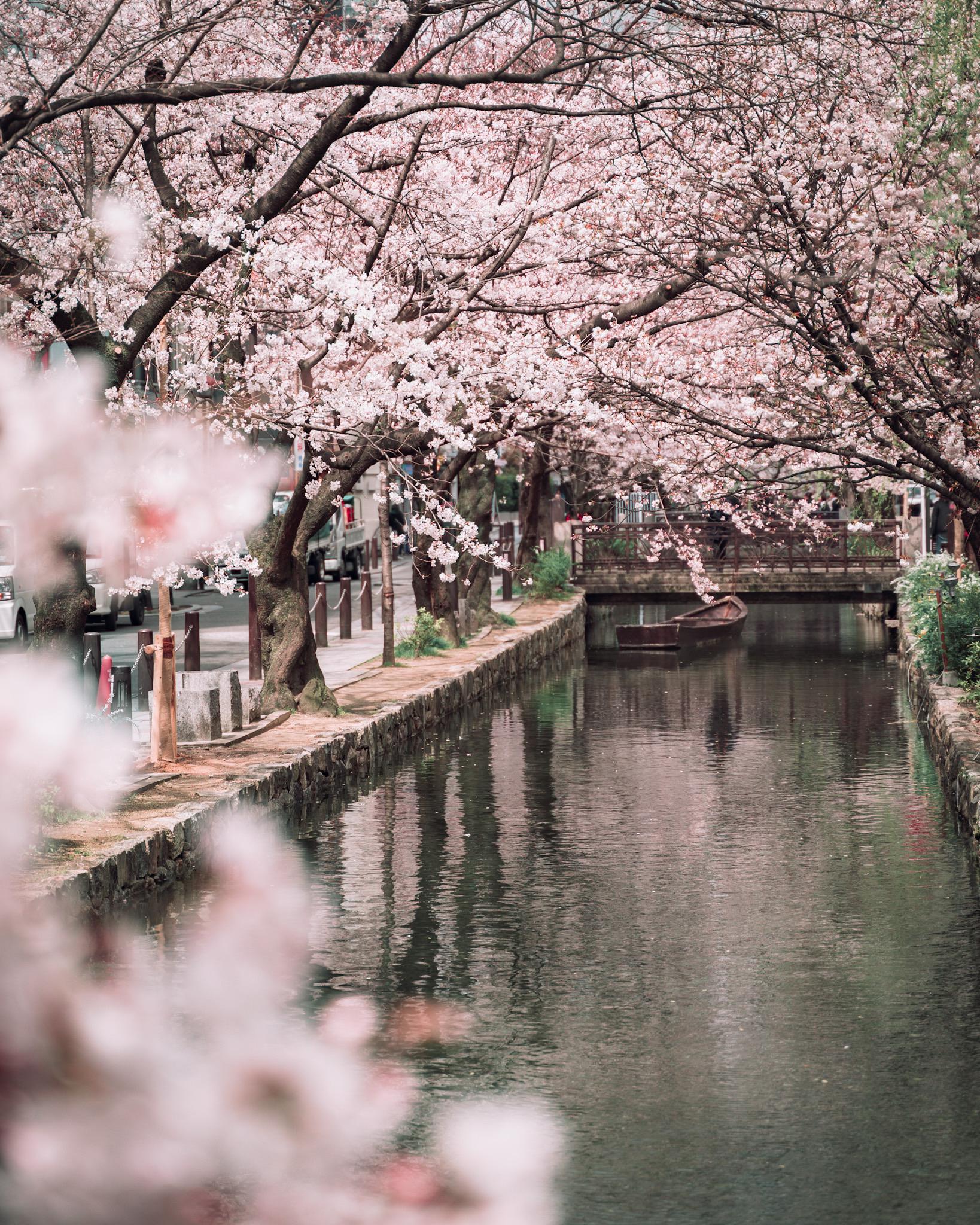

Grammar: Particles
Rather than relying on word sequence, Japanese relies on particles to partner with words in order to indicate the role of the word in the sentence. Think of particles as dancing partners wearing brightly colored clothing who let you know the current occupation of their partner. A subject dances with a pink-scarf wearing dancer. A topic dances with a blue-scarf wearing dancer. A destination of travel dances with a green-scarf wearing dancer. When we look at the dancers, we can see clearly who they are dancing with, letting us know what the sentence means.
Particles are used to explain the who, what, when, where, and how of Japanese sentences and they are in post-fix position, meaning that they follow the words to which they snap.
Mastery of particles is essential to having a native-level understanding of Japanese. In fact, by exploring a frequency dictionary or the Balanced Corpus of Contemporary Written Japanese, one will find that of the 37 most frequent words, 17 of them are particles (45%).
In Japanese Complete we teach particles using a method devised specifically for Japanese Complete and not available elsewhere: the bunsetsu jar. Every jar (which contains a person, place, or thing) needs a lid (which contains a grammatical particle).
Kanji: Meanings
Japan imported symbolic glyphs from mainland Asia and they are referred to as 漢字(かんじ) kanji — letters of the Han Dynasty and there are four types of kanji where only 4% are simple pictographs and over 90% are "meaning-and-sound borrowers."
In acquiring Japanese, modern learners often rely on methods inspired by Heisig's Remembering the Kanji, a book written by James Heisig after he had arrived in Japan too late to take the introductory course; upon asking his friends what the hardest part of the language was, he was quickly informed that the Kanji are a most formidable adversary. He took the spare time before the next semester started to try his best to conquer this formidable opponent, and in the process discovered that he could break the kanji down section-by-section, part-by-part, and develop clever mnemonic devices and imaginary scenes to remember their general meanings for the long-term.
Heisig only provides clear and concise mnemonics for the first hundred-or-so kanji in his series, which is quite deflating to the beginner, leaving much of the creative and mental work to the learner when they could be absorbing, rather than generating, content. This is the reason that we have taken it upon ourselves at Japanese Complete to provide detailed mnemonic lessons for the kanji we teach. You can see the most frequent 777 kanji on our 777 kanji list.
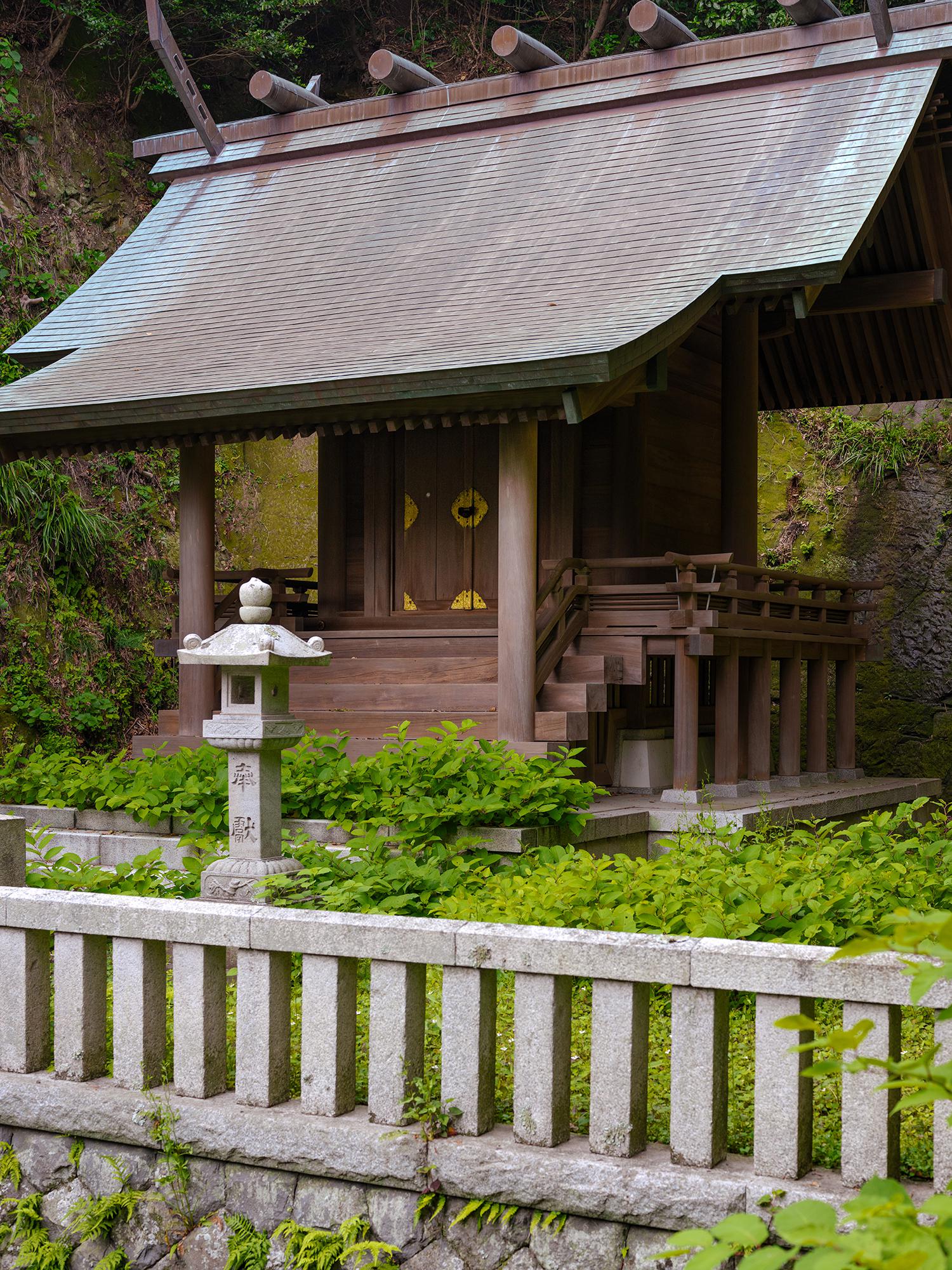
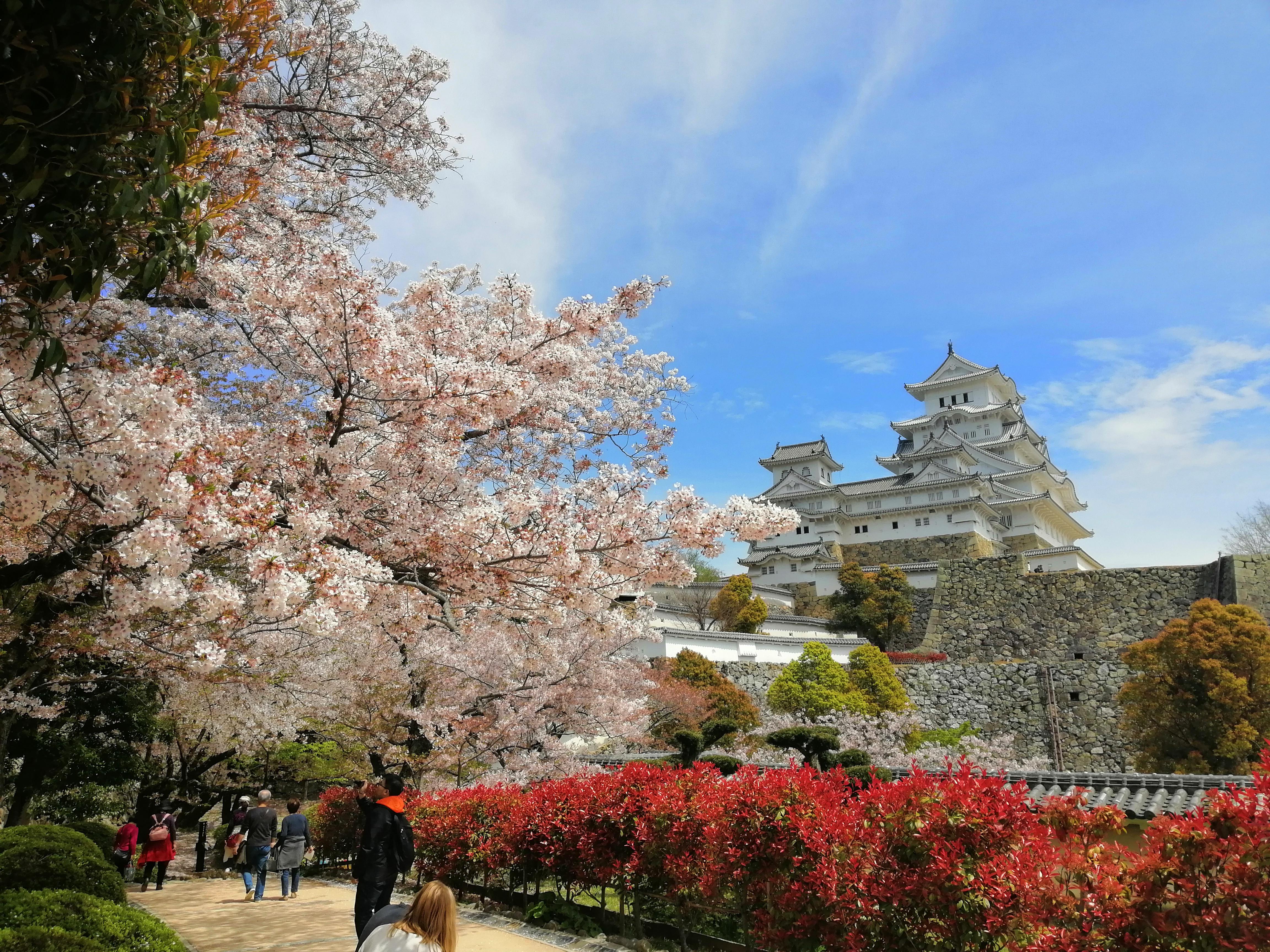
Verbs: Meanings, Connotations
Every Japanese sentence ends with a verb. Our classification scheme in Japanese Complete comes from conversations with expert language teachers from University College London and Middlebury College, schools renowned for their East Asian studies and language departments. While normal textbooks try to wedge Japanese grammar as a round peg into the square-hole shape of English, Japanese Complete strives to simplify the equation as much as possible while retaining all the fidelity and integrity of real Japanese. Our Reverse Engineering a Japanese Sentence page details how our classification of verbs and nouns differs from common textbooks, and illustrates how they are more coherent with actual Japanese.
In general, verbs are the missing piece of every Japanese sentence and we must wait until the end of the sentence or phrase to hear or read them. This is what makes translation and interpretation notoriously difficult, for a translator needing a verb to connect two thoughts, nouns, or ideas, must allow the Japanese speaker to complete the phrase, adding a significant delay to the process, all-the-while needing to be able to perceive the beginning of the next phrase. The latency effect in translating and interpreting Japanese makes this skill quite coveted in tourism, national and international diplomacy, and any role where interpretation in real-time is a must.
By learning a large subset of verbs in their "plain-form" first, and then learning how to transform verbs into their variety of tenses and aspects, one builds a solid foundation for understanding written and oral Japanese. It is wise to familiarize oneself with the great variety of tenses, active and passive constructions, and formality levels early on, so that they are not completely foreign when encountered later on in advanced studies. In Japanese Complete, we teach politeness levels, active and passive tenses, and the variety of verbs early on so that learners have a solid foundation and are not surprised to find whole new constructions in years 3 or 4, but instead are immediately confronted with the variegated tones of the language and its inflexions.
Kanji: Masking
Have you ever written a message using emoji only? Did you know that emoji is a word imported from Japanese?
Just as there are ways to communicate entirely using emoji, Japanese adopted a way early on of using Kanji to communicate ideas and qualities, while at the same time utilising native Japanese phonetics, words, and conjugations. The result is a hybrid, similar to using an emoji to cover up just a portion of a word.
It's sp👻oky how m💢ch l👅nguage
p👥ople can s👁️e and
und💡rstand just by rec👀gnizing
the symb🔠ls ⤵️n the p📃ge.
Just like how the sentence above is readable to people with strong English comprehension, kanji are readable to people with strong Japanese comprehension, because they act as symbolic markers for ideas, notions, concepts, qualities, and namely, nouns and verbs.
Kanji are used to mask the beginnings of native Japanese words and the result is similar to the above. By learning how kanji are used to mask the phonetic ひらがな Hiragana one is able to improve their reading speed dramatically. However, some kanji have quite a few possible "pronunciations" or readings which can make kanji intimidating for the beginner. Do not fret. By learning the kanji meanings first, and later expanding to see how they mask native Japanese words, one has the perfect foundation for long-term grappling and mastery.
Kanji and their masks are an educational priority in Japanese Complete and our innovative quiz system trains the mind and the eyes to recognize and understand the meanings by using English to surround the kanji — a method devised especially for Japanese Complete we call "Kanji in English Context."
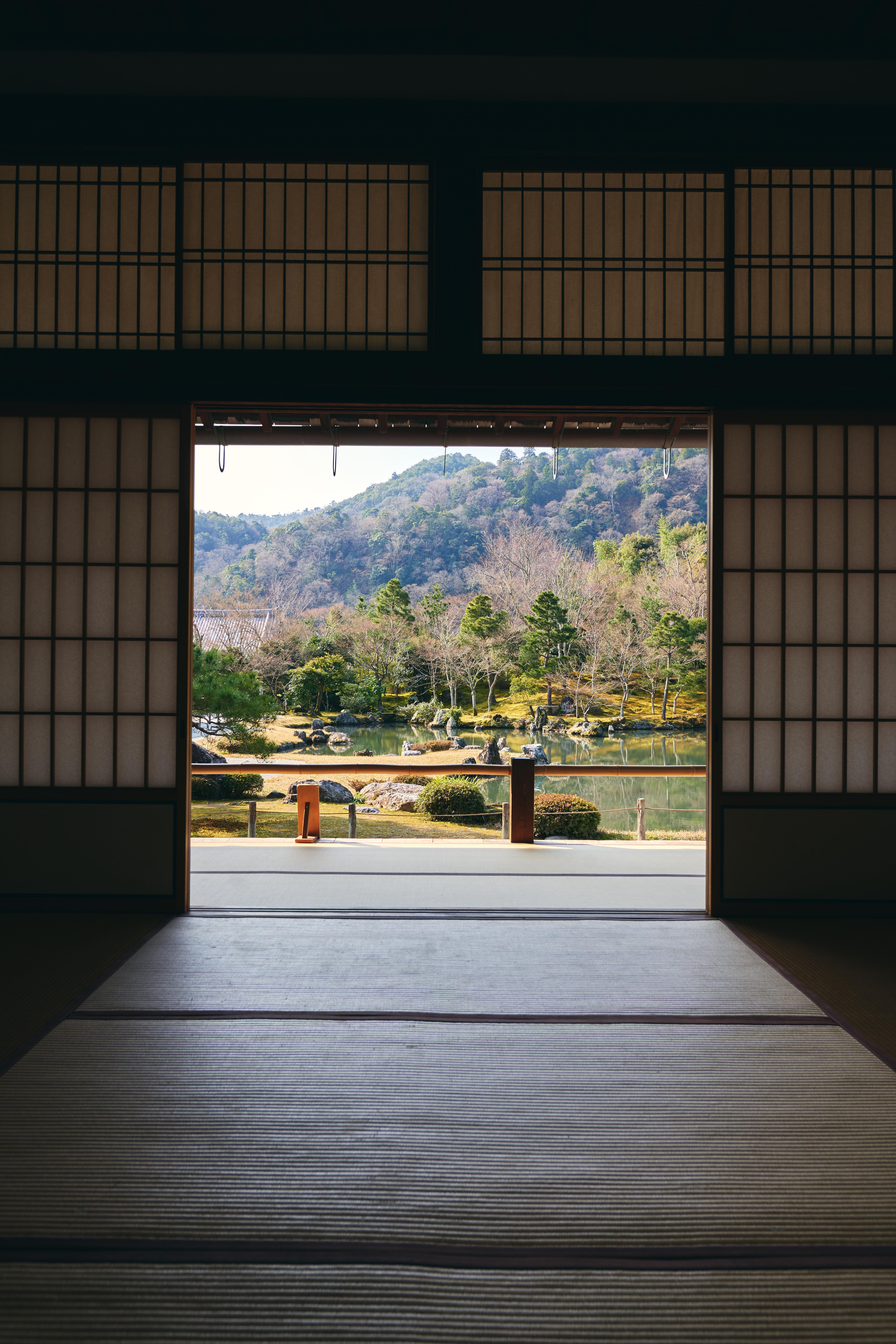
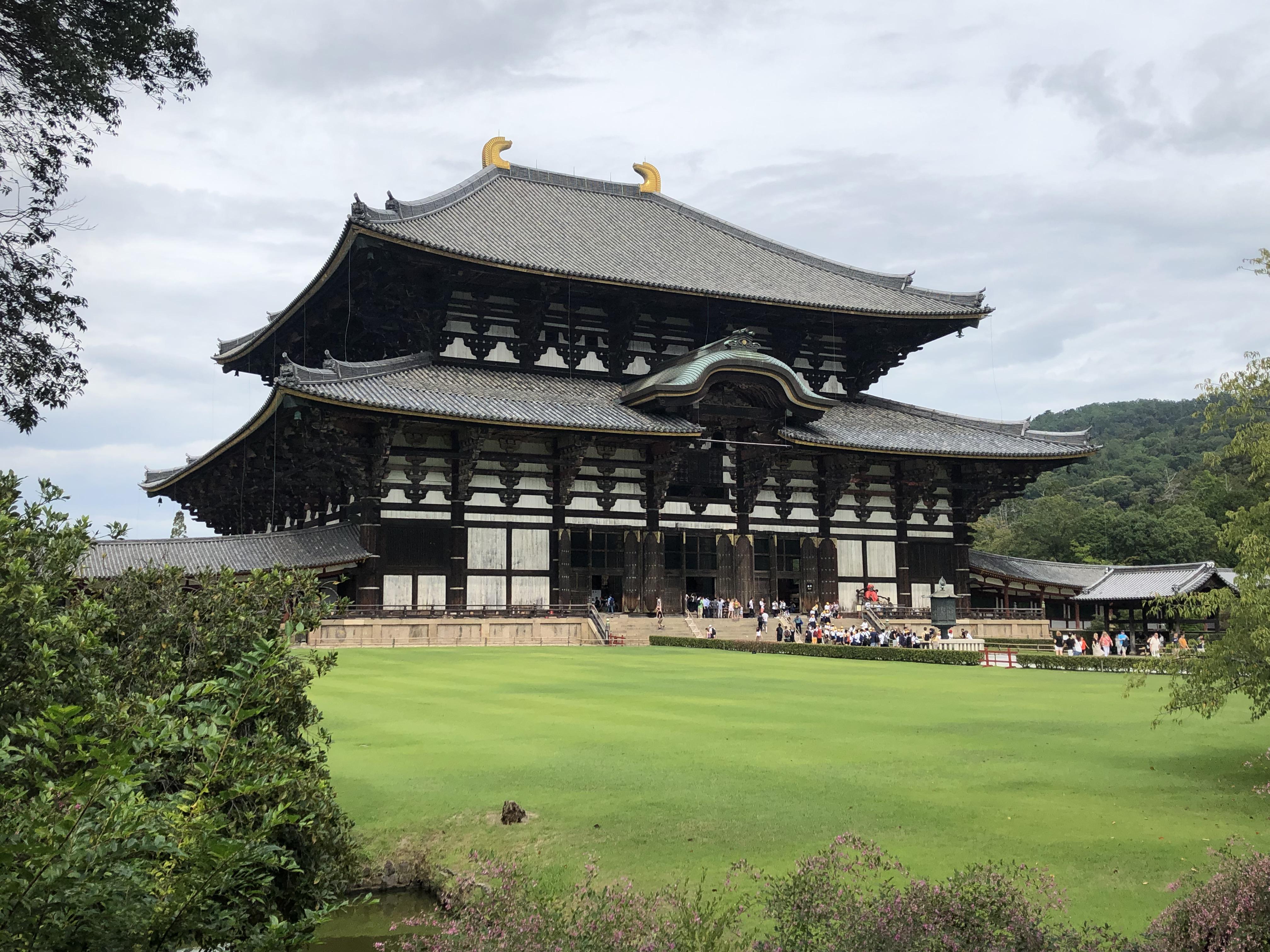
Culture, Politeness and Formality Levels, Bowing, Tradition
Every interaction: starts with a bow and ends with a bow.
Japanese culture historically had four classes in which people were coarsely grouped:
- Aristocrats, poets, the royal court
- Warriors
- Merchants
- Peasant Farmers
Japan has the unique characteristic of being an island nation that could incubate and accelerate findings and teachings brought from elsewhere. We find the 寺子屋(てらこや)[tera-koya] educational system as one of the earliest and most sophisticated teaching systems in the world — young children went to monastic institutions to learn how to read and write, for the most valuable thing to learn to read and write was the sutras of the Buddhist canon, the kanji of mainland Asia, and the various subjects one would need to know for success.
With its unique combination of Enlightenment tradition, class stratification, and being an isolated landmass, Japan created a society and social ecosystem very much its own. In the language, writings, behaviors, and economy we find reflections of these deeply rooted traditions and stratifications that may seem antequated or anachronistic in other parts of the world. But modernisation has not left Japan behind, instead, their cultural norms have equipped them to adapt and flourish thanks to their reverence of Nature, hierarchical human organizations, and formality that bookends the beginning and end of just about every interaction.
With regards to culture, there is surface culture which is talked about and known, and there is deep culture which is more about attitudes, behaviors, and expectations that cannot be easily summarized or stated even by natives of the culture itself.
A great way to develop a keen understanding of Japanese culture and tradition is to study and observe and to read accounts of early travelers to Japan. Through observing media that depict a variety of scenes and situations, one can gradually glean the important and most salient characteristics and behaviors that constitute correct politeness and formality. In general, we must be humble to accept that we will make errors in our assessment of how a culture ought operate, and be willing to re-evaluate even the most simple and minute of behaviors to align more with the grain of a culture new to us.
Immersion and Exposure
In the same way that it helps to have had a few swimming lessons before diving into the sea, it helps to have had a strong foundation in grammar particles, verbs, kanji, and general cultural norms before immersing oneself in a completely Japanese environment.
Yet, it cannot be stressed enough how vital immersion and exposure are to mastery of a language. If we consider how many of our daily hours are spent in an environment of our native tongues, it becomes apparent that to become truly native one needs to crank up language exposure and immersion to the max. There is something to be said for quality over quantity but in general, going to the gym more frequently will make one stronger faster, and likewise frequent immersion is key for mastery of a language.
Thanks to the internet, it's possible to participate in schedules such as All Japanese All the Time and while we provide a more structured flow for comprehension, replete with lessons and materials not available elsewhere, the general gist of the philosophy of schedules such as AJATT is noteworthy: immerse yourself as much as possible, 24/7 and 365 in order to "get your ears wet" as much as humanly possible. While paths like this are not for the faint-hearted, their philosophy is sound: more immersion and more exposure equals a greater mental library upon which to datamine.
By surrounding oneself with Japanese media constantly, or as much as possible — books, films, music, newspapers, soundtracks, art, manga, television shows, and the like — one is planting the seeds for comprehension and understanding. The brain is magical and can unravel most any knot thrown at it, provided your attitude and motivation are positive and for benefitting yourself and others.
With Japanese Complete, you can skip a lot of the grunt work and begin laying a solid foundation immediately, so that you can maximize the juice you are able to squeeze from the fruits of immersion.

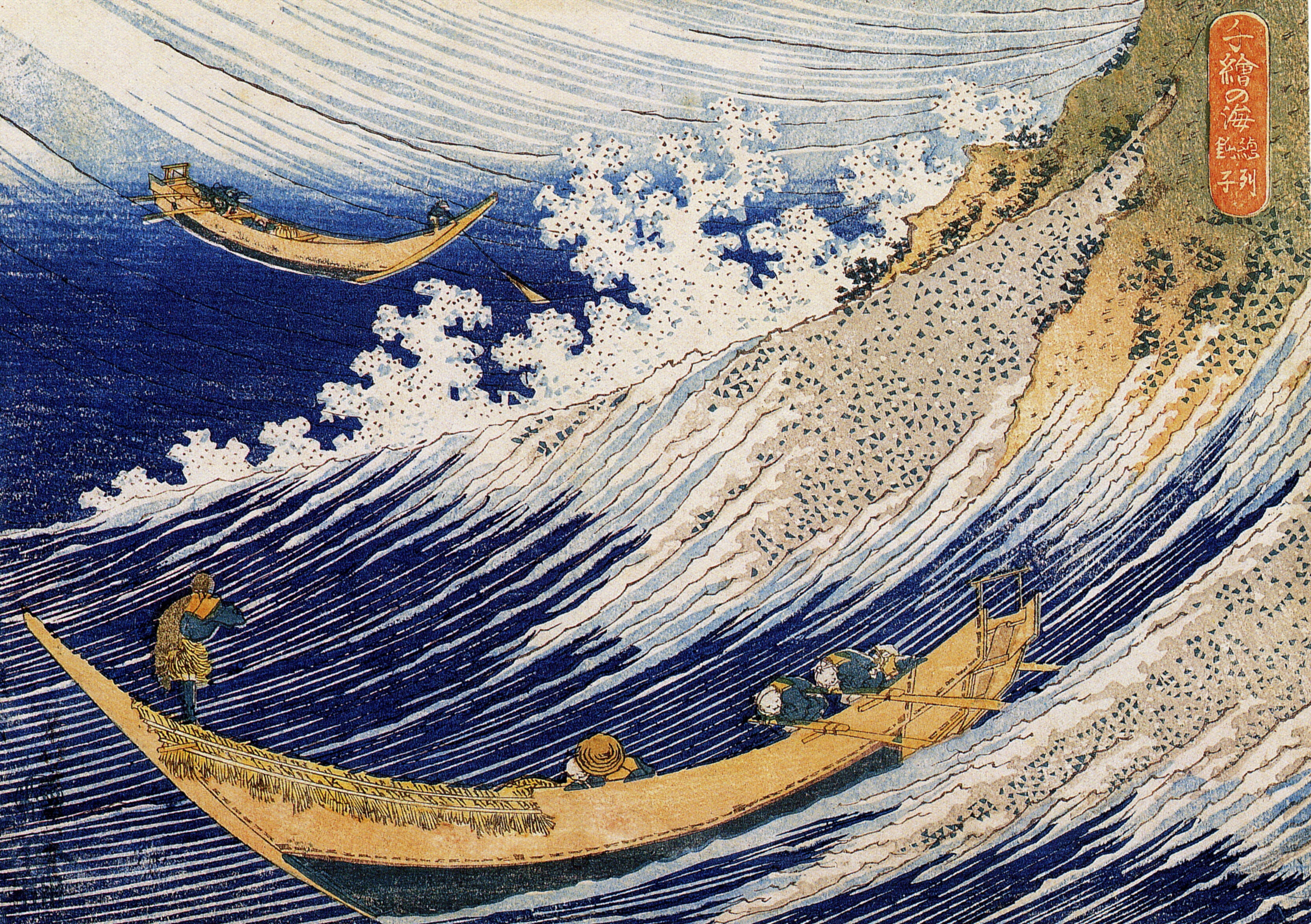
Practice, Consistency, Novels, Shows, Upkeep.
Not only must a second or third or fourth language be learned through effort and deliberation, it must be maintained and to keep your Japanese chops once you have them requires the two modes of passive acquisition through continued immersion (be it media, or being physically in a Japanese-only environs), and active use through generating language on your own — writing letters to friends, commenting on videos, making a Japanese-only twitter account, switching your phone or computer language locale to Japanese, and so forth.
Japanese Complete offers a visual sentence composing tool called Wag that lets you create Japanese sentences visually. The tool is grammar-aware and will ensure that an ungrammatical sentence cannot be constructed. Such tools help one stay sharp with their active use and generation of language and content.
The JLPT and Working or Studying in Japan
There are many ways to get to Japan — some people choose to teach English, others choose to study abroad during their university or college years. Others may have the fortune of landing an internship or business position, and all these opportunities are available provided you know where to look, when to look, and how to convey your sincere interest in mastering the language. It helps significantly if you have a strong foundation in Japanese and you are roughly ten times more likely to land a job or internship in Japan provided you can read, or at least comprehend 70-80% of a contemporary novel.
There is an exam called the Japanese Language Proficiency Test and its levels range from 5 to 1, where N5 is beginner and N1 is near-native expert. However, the JLPT is not the be-all-end-all exam for entry into Japan and it is far more valuable to study on a path to native-level comprehension that has a strong foundation in long-term understanding than to take courses that "teach to the test" and leave you hanging for more subtle and nuanced language and cultural features.
Immersion programs in the United States, such as the one at Middlebury College in Vermont require signing of their trademarked "Language Pledge" that states for the nine weeks of the program you will only use your language [weapon] of choice, Japanese. This language monastery is exceptional at creating people who are exceptional at Japanese, because after several weeks of immersion, and daily instruction, and doing day-to-day tasks such as sports games and cafeteria time with your instructors all in Japanese your mind is pressed into a mode where it understands that you are doing everything you can to acquire the language. Some of our instructors have nothing but praise for this program, and in the words of Hatasa-Sensei who was the head of the Japanese school for many years, "You will have more Japanese exposure and immersion here than anywhere, including Japan." In Japan, people love to practice their English, and they are not so keen to correct your mistakes, while at a summer language school, perfection and positivity are the "names of the game," so-to-speak.
Do-it-yourself immersion can be just as effective as a retreat into a language monastery or summer language school with a Language Pledge™, leading up to a trip or stay in Japan, but requires a very strong motivation, some comraderie with friends and fellow learners, and the discipline to stay immersed for long stretches at a time.
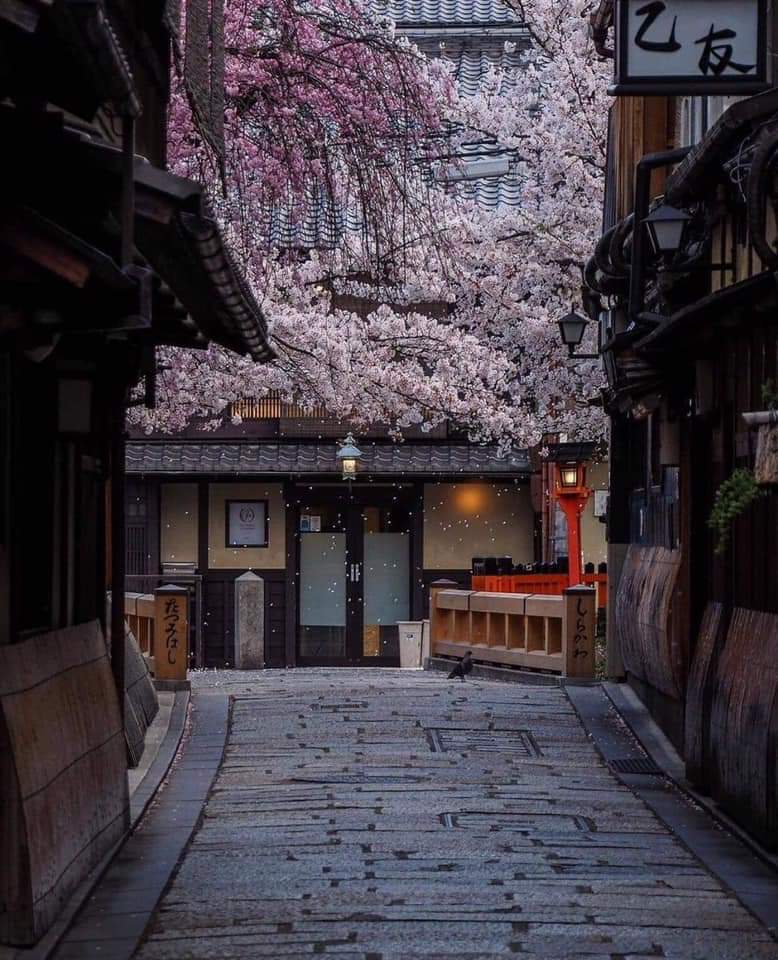
The Japanese Complete Curriculum
Check out the innovative and revolutionary methods of our curriculum that have been devised for learners who want to retain Japanese for the long-haul and reach native-level fluency as rapidly as humanly possible.
Subscribe to Lessons by E-mail
Start Mastering Japanese today with Japanese Complete.
Sign up for free lessons by e-mail, teaching kanji, particles, and verbs.
Monthly subscribers who opt for premium get many perks, such as occasional lessons straight to their inbox, cumulative daily quizzes, resources on training and practicing, write-ups on learning strategies, audio dialogues with two levels of translations, and full access to the most thorough and beginner-friendly curriculum out there.
There has never been a more comprehensive tool to wrap your mind around how Japanese works. Start your path to mastery, today.
Learn. Train. Retain.™
Sign up today →for a chance to win← a 3-month subscription to Japanese Complete, a $150 value. Or, get premium access today, support a revolutionary education company, and start your path to mastery without delay.
For questions, concerns, and discounts for students and educational institutions, contact us.
I really appreciate your philosophy and think that everything has been awesome. -L.N.
The two best things I learned from Japanese Complete was:
1. The bunsetsu jar framework
2. The observation that one needs less than the recommended Jooyoo Kanji to understand day-to-day literature. -A.C.
